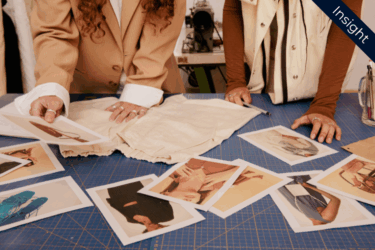AI Trend Forecasting: Strategies for Fashion Brands to Maintain a Competitive Edge

Fashion has always been a bit of a guessing game. What will people want to wear next season? Which colours will pop? What’s going to flop? For decades, designers and merchandisers have relied on instinct, experience, and a little bit of luck. But now, AI is providing the opportunity to change the game.
Today, fashion brands are using artificial intelligence not just to follow trends – but to predict them. And with tools like Microsoft Copilot, Azure AI, and Copilot Studio, they’re doing it faster, smarter, and with more confidence than ever before.
From gut feeling to data-driven design
Fashion will always be creative. But now, it’s also deeply analytical. Brands are tapping into AI to scan millions of data points – social media posts, search trends, e-commerce behaviour – to stop what’s bubbling up before it hits the mainstream.
Take Estée Lauder for example. They’ve built a ConsumerIQ agent using Microsoft 365, Azure, OpenAI and Copilot Studio to help their teams identify emerging trends and respond in real time. Instead of waiting for a trend report, marketers can ask questions like ‘what’s trending in skincare on TikTok this week?’ and get instant, actionable insights.
This kind of agility is becoming essential. According to McKinsey, generative AI could unlock up to $10 billion in value for the global fashion and beauty industry. That’s not just hype – it’s a competitive edge.
Designing with AI
AI isn’t just helping brands spot trends – it’s helping them design around them. Microsoft’s Fashion Design Agent is a great example here. It lets designers pull in trend data, generate new concepts, and even test designs on social media before committing to production.
Here is how it works in practice:
- A designer sees a spike in interest around metallics and asymmetrical cuts
- They use AI to generate a few digital prototypes
- Copilot helps them create social posts to test reactions
- Based on feedback, they refine the designs and forecast demand more accurately before production is considered
It’s fast, flexible, and reduces the risk of launching a collection that misses the mark. Making smarter, more sustainable business decisions much more attainable.
Personalisation that feels effortless
AI is also transforming how fashion brands connect with customers. With Microsoft’s Copilot templates and Azure AI, retailers can build conversational shopping experiences that feel genuinely personal.
Say a shopper is browsing your site and is greeted by a digital assistant that not only knows their size and style, but even the weather in their city. It suggests outfits, checks availability in their closest stores, and offers styling tips – all in a natural, chat-based interface.
It’s not just good UX. It’s good business. Personalised experiences drive higher conversion rates, increase loyalty, and reduce returns.
Supercharged creativity
AI isn’t here to replace designers – it’s here to supercharge them. Just ask Aimee Kelly, a fashion creator who used Microsoft Copilot to turn her inspiration from Art Basel Miami Beach into four winter-ready looks.
She didn’t lose her creative voice but rather amplified it. That’s the real power of AI in fashion: it helps creatives explore more ideas, iterate faster, and bring bold visions to life with less friction.
Where to begin
If you’re a fashion brand wondering where to start, the good news is you don’t need to overhaul everything. Microsoft tools – like Copilot Studio, Azure Open AI and Dynamics 365 are built to make it easy to experiment and scale with what works for you.
Fashion moves fast – now you can too
Fashion will always be about creativity, culture, and expression. But in 2025 and beyond, it’s also about intelligence. The brands that embrace AI aren’t just keeping up but are setting the pace for the industry.
Get in touch with us to find out more.